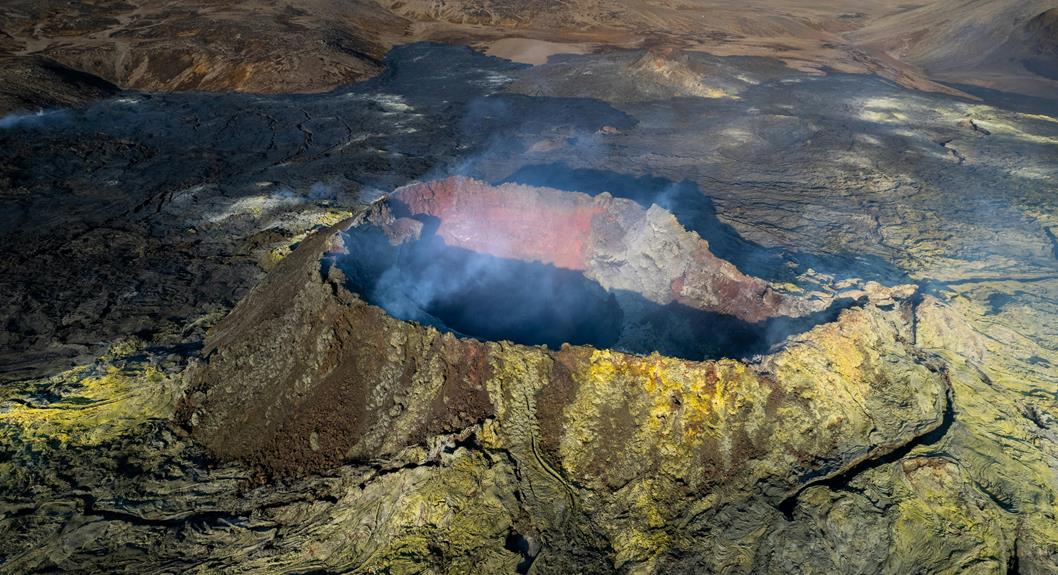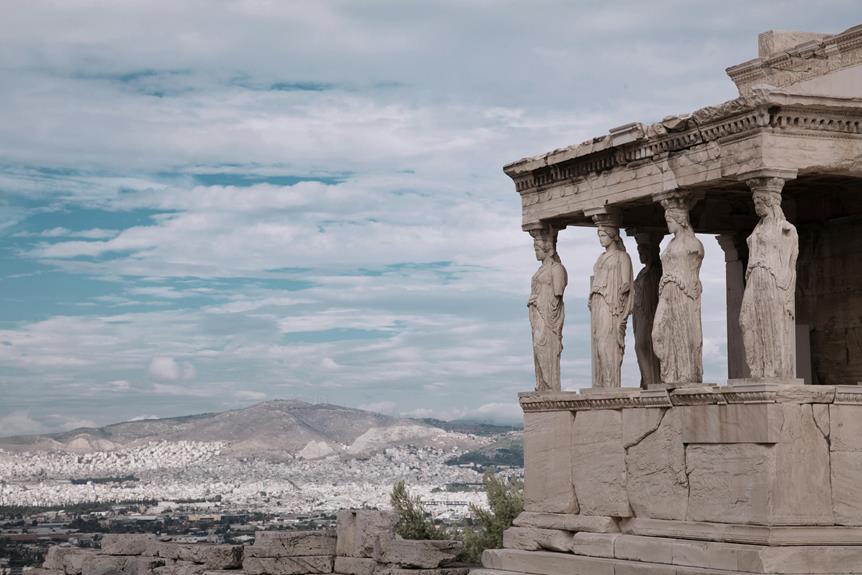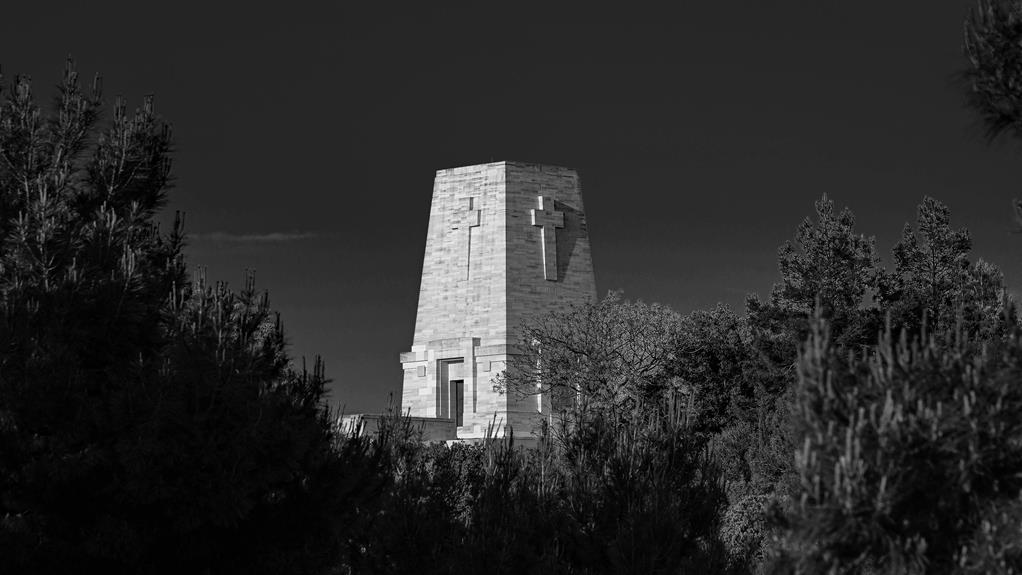The Eyjafjallajökull Volcano in Iceland, with its intricate geological history and significant impact on both aviation and the environment, has garnered attention worldwide. However, beyond its eruptive reputation lies a compelling story of resilience and scientific intrigue waiting to be unraveled. As we explore the depths of this volcanic giant, a deeper understanding emerges, shedding light on its profound influence on the surrounding landscapes and global systems. But what lies beneath the surface of Eyjafjallajökull's fascinating facade?
Key Takeaways
- Recorded history of various eruption styles.
- Influence of magma composition on eruption type.
- Impact on aviation safety and economic losses.
- Geological formation related to tectonic plate movements.
- Importance of ongoing monitoring for research and prediction.
Eruption History
Throughout the recorded history of the Eyjafjallajökull Volcano in Iceland, multiple significant eruptions have been documented, each characterized by distinct phases of volcanic activity. These eruption patterns reveal important insights into the behavior of the volcano and the underlying geological processes. Eyjafjallajökull's eruptions have displayed a variety of styles, ranging from effusive to explosive, with some eruptions producing significant ash clouds that disrupted air travel in the region.
The magma composition of Eyjafjallajökull plays a significant role in determining the type of eruption that occurs. The volcano is known for its intermediate magmatic composition, consisting of a mixture of basaltic and rhyolitic magma. This composition results in eruptions that can exhibit both effusive and explosive characteristics. The presence of gas-rich, viscous magma can lead to explosive eruptions, where the magma fragments into pyroclastic material and ash, creating hazardous conditions for surrounding areas.
Understanding the magma composition of Eyjafjallajökull is essential for predicting future eruptions and evaluating potential hazards. By studying past eruption patterns and the associated magma composition, scientists can better prepare for future volcanic activity and mitigate risks to the surrounding communities. Continuing research on Eyjafjallajökull's eruption history and magma properties is critical for improving volcanic monitoring and hazard assessment in the region.
Geological Formation
The geological formation of the Eyjafjallajökull Volcano in Iceland is characterized by a complex interplay of tectonic forces and volcanic activity, shaping the distinctive features of this stratovolcano.
- Tectonic Plate Movements: The Eyjafjallajökull Volcano is located on the Mid-Atlantic Ridge, where the North American and Eurasian tectonic plates meet. The divergent boundary created by these plates moving apart allows magma to rise towards the surface, leading to volcanic activity.
- Subduction Zones: The volcano's formation is also influenced by subduction zones, where one tectonic plate descends beneath another. This process can lead to the melting of the descending plate, generating magma that eventually rises and contributes to volcanic eruptions.
- Magma Composition: The composition of the magma beneath Eyjafjallajökull is another pivotal factor in its geological formation. The mixing of basaltic and rhyolitic magmas beneath the volcano results in explosive eruptions, shaping its cone and crater.
- Glacial Interaction: Eyjafjallajökull's interaction with glaciers further influences its formation. When magma comes into contact with ice during eruptions, it can lead to violent explosions and the formation of ash clouds, impacting the surrounding landscape and ecosystems.
This intricate interplay of volcanic activity and tectonic forces has sculpted the Eyjafjallajökull Volcano into the awe-inspiring natural wonder it is today.
Impact on Aviation
Aviation operations worldwide have been markedly disrupted by the volcanic ash clouds produced during eruptions of the Eyjafjallajökull Volcano in Iceland. The presence of volcanic ash in the atmosphere poses a significant threat to aircraft due to its ability to cause damage to engines, cockpit windows, and airframes. As a result, air travel disruption has been substantial, leading to widespread flight cancellations and airspace closures across Europe and the North Atlantic region.
In response to the eruption, safety measures were implemented to mitigate the risks associated with flying through volcanic ash. Volcanic ash advisory centers were established to monitor ash concentration levels and provide timely information to airlines and air traffic control. Additionally, aircraft were rerouted to avoid areas with high ash concentrations, and flight altitudes were adjusted to minimize exposure to the volcanic plume.
The economic impact of the aviation disruption caused by the Eyjafjallajökull eruption was significant. Airlines incurred substantial financial losses due to canceled flights, reroutings, and passenger compensations. Airports and related businesses also suffered from reduced passenger traffic and cargo operations, leading to revenue losses across the aviation sector.
Local Environment Effects
Following the eruption of the Eyjafjallajökull Volcano in Iceland, the local environment has experienced a series of significant effects that encompass various ecological and geological aspects.
- Climate Change Effects: The eruption of Eyjafjallajökull contributed to short-term cooling due to the release of sulfur dioxide and ash into the atmosphere. This volcanic activity can impact global climate patterns, leading to changes in temperature and weather systems in the region.
- Biodiversity Impact: The ash and lava flows from the volcano can alter the landscape, affecting local flora and fauna. Species may struggle to survive or repopulate in the aftermath, leading to potential shifts in biodiversity and ecosystem dynamics.
- Pollution Concerns: The emission of gases and particulate matter during the eruption can lead to air and water pollution in the surrounding areas. This pollution can harm human health, contaminate water sources, and disrupt ecological balance.
- Conservation Efforts: In response to the environmental impact of the eruption, conservation efforts have been initiated to mitigate the damage and restore the affected areas. These efforts may include reforestation, habitat restoration, and monitoring of wildlife populations to ensure the preservation of the local environment.
The eruption of Eyjafjallajökull has highlighted the interconnectedness of geological events with ecological systems, emphasizing the need for sustainable conservation practices in the face of natural disasters.
Eyjafjallajökull's Name Origin
Upon exploring the geological and environmental impacts of the Eyjafjallajökull Volcano eruption in Iceland, an interesting aspect to investigate is the origin of its unique and challenging name. The name 'Eyjafjallajökull' originates from Icelandic words: 'Eyja' meaning island, 'fjalla' meaning mountain, and 'jökull' meaning glacier. This linguistic composition reflects the volcano's location beneath the Eyjafjöll mountain range and its glacier-capped summit.
Table: Eyjafjallajökull's Name Origin
| Keyword | Description |
|---|---|
| Linguistic origins | The name is derived from Icelandic words meaning 'island mountain glacier.' |
| Mythological connections | Some believe Eyjafjallajökull is connected to Norse mythology, specifically as a sleeping giant waiting to awaken. |
| Cultural significance | The name represents Iceland's rich cultural heritage and the blending of nature with human language. |
| Pronunciation challenges | Its complex pronunciation, including sounds like 'll' and 'jökull,' pose difficulties for non-Icelandic speakers. |
The name Eyjafjallajökull not only serves as a geographical identifier but also carries cultural and mythological significance. Pronouncing it correctly may be challenging for those unfamiliar with Icelandic phonetics, adding to the aura of mystery surrounding this captivating volcano.
Monitoring and Research
Extensive monitoring and research efforts are continuously undertaken to study the activity and behavior of the Eyjafjallajökull Volcano in Iceland. Understanding the volcanic processes occurring within Eyjafjallajökull is vital for evaluating potential hazards and mitigating risks associated with its eruptions.
Here are four key aspects of the monitoring and research activities focused on this volcano:
- Seismic Activity Monitoring: Seismometers are strategically placed around Eyjafjallajökull to detect and record even the slightest tremors caused by magma movement beneath the surface. Analysis of these seismic signals provides insights into the volcano's internal dynamics and helps in predicting possible eruption scenarios.
- Gas Emissions Analysis: Continuous monitoring of gas emissions, particularly sulfur dioxide and carbon dioxide, offers valuable information about the volcano's magma composition and eruption likelihood. Changes in gas ratios can indicate variations in magma sources and potential eruption styles.
- Geodetic Measurements: GPS instruments are utilized to measure ground deformation, such as swelling or subsidence, which can occur as magma accumulates beneath the volcano. These measurements help in tracking magma movement and estimating the potential volume of erupted material.
- Magma Composition Studies: By analyzing samples of erupted materials, scientists can determine the chemical composition of Eyjafjallajökull's magma. Understanding the magma's composition aids in identifying eruption triggers, predicting eruption styles, and evaluating the potential hazards posed by future volcanic activity.
Eyjafjallajökull Hiking Trails
Utilizing established paths and routes, the Eyjafjallajökull Hiking Trails provide visitors with immersive experiences through the diverse landscapes surrounding the volcano. These trails offer a unique opportunity to explore the natural beauty of Iceland while witnessing the stunning scenic views that this region has to offer. As hikers navigate through the rugged terrain, they are greeted with panoramic vistas of snow-capped peaks, lush valleys, and cascading waterfalls.
One of the highlights of hiking on Eyjafjallajökull is the chance to encounter the local wildlife that calls this area home. Visitors may spot arctic foxes, reindeer, and a variety of bird species as they trek through this pristine wilderness. The trails also offer a glimpse into the geological wonders of the region, with opportunities to observe volcanic formations and unique rock formations up close.
For those seeking a more challenging adventure, the hiking trails around Eyjafjallajökull cater to all levels of experience. From leisurely walks for beginners to more strenuous treks for seasoned hikers, there are options available for everyone to enjoy. Whether exploring solo or with a guided tour, hikers are sure to be captivated by the raw beauty and untamed landscapes that define the Eyjafjallajökull region.
Tourism and Visitor Information
The influx of visitors drawn to the Eyjafjallajökull region for its hiking trails has sparked an increased interest in the tourism offerings and visitor information available in the area. This surge in tourism has led to a greater focus on enhancing the overall visitor experience.
Here are four key aspects that make Eyjafjallajökull a compelling destination for travelers:
- Tourist Attractions: The region surrounding Eyjafjallajökull boasts a myriad of tourist attractions, including stunning waterfalls like Seljalandsfoss and Skógafoss, black sand beaches, and the Þórsmörk Nature Reserve. These attractions offer visitors a glimpse into the unique natural beauty of Iceland.
- Accommodations: To cater to the growing number of tourists, the area provides a range of accommodation options, from cozy guesthouses and cottages to luxurious hotels. Visitors can choose to stay amidst the tranquility of the countryside or opt for lodging with views of the volcano itself.
- Outdoor Activities: Outdoor enthusiasts will find a paradise in the Eyjafjallajökull region. From glacier hiking and ice climbing on nearby glaciers to river rafting and horseback riding, there are endless opportunities for adventure in this volcanic landscape.
- Sightseeing Opportunities: The area offers unparalleled sightseeing opportunities, with panoramic views of Eyjafjallajökull and nearby volcanoes like Katla. Visitors can also explore the surrounding area on guided tours that provide insights into the geological history and cultural significance of this region.
Eyjafjallajökull Today
In the present day, Eyjafjallajökull remains a focal point for scientific research on volcanic activity and its impact on the surrounding environment. Since its last eruption in 2010, Eyjafjallajökull has continued to exhibit signs of current activity, with ongoing monitoring by geologists and volcanologists to better understand its behavior and potential hazards.
Scientific research conducted on Eyjafjallajökull today includes a variety of monitoring techniques such as seismic activity measurements, gas emission analysis, and satellite imagery to track any changes in the volcano's internal processes. These efforts aim to improve early warning systems and risk assessment models for future eruptions.
Recent studies have also focused on the volcano's influence on the local environment, including its effects on air quality, soil composition, and water sources. Researchers are particularly interested in studying how volcanic ash deposition can impact agriculture, wildlife habitats, and human health in the surrounding areas.
Furthermore, Eyjafjallajökull's unique location and geological features make it an ideal natural laboratory for studying volcanic phenomena. By analyzing the volcano's current activity patterns and geological history, scientists hope to gain insights that can be applied to volcanic research worldwide, enhancing our understanding of volcanic processes and improving volcanic risk management strategies.
Frequently Asked Questions
Can Tourists Visit the Volcanic Crater of Eyjafjallajökull?
Volcano hiking enthusiasts seek to explore the unique geological formations and witness the raw power of volcanic activity.
Geothermal spas offer a relaxing experience amidst the volcanic landscapes, providing a contrast to the rugged terrain.
Access to volcanic craters for tourists must be carefully managed to guarantee safety and preserve the natural environment.
Regulations, guided tours, and safety measures are essential for a sustainable and enriching experience for visitors.
Are There Any Myths or Legends Associated With Eyjafjallajökull?
Myths and legends often form the essence of cultural narratives, providing insight into a society's beliefs and values.
In the case of Eyjafjallajökull, Iceland, a rich tapestry of folklore surrounds this majestic landform.
These stories, passed down through generations, not only add to the cultural significance of the region but also serve as a proof to the enduring power of storytelling in shaping our collective identity.
How Deep Is the Magma Chamber Beneath Eyjafjallajökull?
Magma chambers are reservoirs of molten rock beneath the Earth's surface. The depth of a magma chamber can vary greatly depending on the volcano's activity, with some chambers located just a few kilometers below the surface, while others extend deeper.
The composition of magma in the chamber plays a vital role in determining the volcano's eruptive behavior and the type of volcanic rocks that are produced. Seismic activity around a volcano can provide valuable insights into the movements of magma beneath the surface, helping to monitor potential eruptions and assess geothermal energy potential in the area.
Can You See the Northern Lights From Eyjafjallajökull?
When seeking the best viewpoints to observe the Northern Lights, consideration of weather conditions is essential.
Ideal locations for viewing this natural phenomenon are those with clear skies, minimal light pollution, and magnetic activity conducive to aurora borealis sightings.
It is vital to choose a site away from urban areas and with favorable weather patterns to maximize the chances of witnessing the spectacle of the Northern Lights.
What Wildlife Can Be Found Around Eyjafjallajökull?
The region surrounding Eyjafjallajökull offers diverse wildlife viewing opportunities, particularly for birdwatching enthusiasts. Various bird species can be observed in the area, including puffins, Arctic terns, and golden plovers.
Hiking trails in the vicinity provide access to these natural habitats, allowing visitors to immerse themselves in the unique ecosystem and observe wildlife in their natural environment.
Birdwatching and hiking are popular activities that showcase the rich biodiversity present around Eyjafjallajökull.
Conclusion
To sum up, the Eyjafjallajökull Volcano in Iceland stands as a formidable force of nature, shaping the landscape and impacting various aspects of our world.
Its history of eruptions, geological formation, effects on aviation, and local environment highlight its significance in scientific study and natural exploration.
With ongoing monitoring and research, Eyjafjallajökull remains a compelling site for understanding volcanic behavior and mitigating risks, making it an essential focal point for geological research and environmental conservation efforts.


